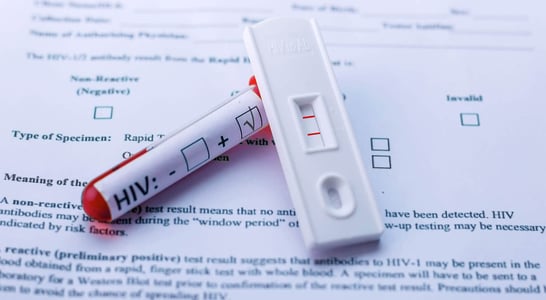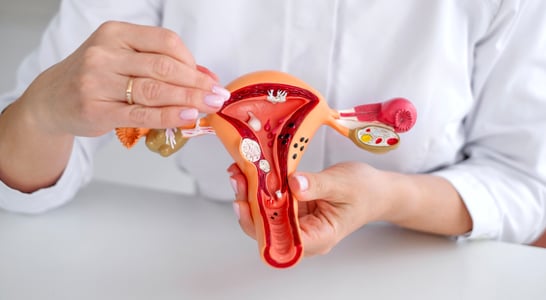
Ehlers-Danlos Syndrome Awareness Month
Educate yourself and others on Ehlers-Danlos Syndrome, a hard-to-diagnose condition that may cause chronic pain, fragile skin, joint problems and more.
Are you living with Ehlers-Danlos syndrome? Do you know someone who is? If so, then it’s time to get ready for the eponymous month, raising awareness for people across the globe with this rare and difficult-to-diagnose condition.
For years, the medical community has struggled to identify patients with this set of syndromes correctly. There’s a drive to highlight the symptoms of the condition, raise money, educate the public, and fundraise for those affected.
Ehlers-Danlos syndromes are a collection of more than thirteen hereditary disorders that affect the connective tissue throughout the body. People with the condition have mutations of specific genes that affect the ability of cells to create proteins to construct joints in the usual way. These syndromes, therefore, result in symptoms such as chronic pain, fragile skin, the ability to flex joints beyond the normal range, and rupturing of internal organs. While many of the effects of the disorder are mild, some can be life-threatening and require immediate hospitalization.
People with Ehlers-Danlos syndrome historically struggled to obtain accurate diagnoses. Many of the symptoms closely resemble those of other more common diseases, causing doctors to make incorrect diagnoses. At root, Ehlers-Danlos syndromes are genetically heritable. So in an era marked by a lack of DNA testing, an accurate diagnosis was difficult.
Recently, however, there has been substantial progress towards classifying and identifying the conditions. In 2017, researchers published more than eighteen papers in the Journal of Medical Genetics, clarifying the different varieties of the disease and better characterizing their properties. The Ehlers-Danlos Society added to the body of research and publicly-available information by releasing a review of the research materials, backed by more than ninety experts. It was the first significant update for more than twenty years.
The result of this effort is a considerably improved understanding of the syndrome at the scientific level. The challenge is to filter the information out to medics, schools, and the public at large.
History of Ehlers-Danlos Syndrome Awareness Month
Before 1997, researchers classified Ehlers-Danlos Syndrome into ten specific types, based on specific genetic mutations associated with symptoms (such as connective tissue issues). As genetic testing improved, however, the number of Ehlers-Danlos-type syndromes began to expand, with more than thirteen currently classified.
The rationale for Ehlers-Danlos Syndrome Awareness Month, however, isn’t as straightforward as calling for more accurate DNA tests. Many researchers believe that medical science is only just scratching the surface of syndromes related to the original set. Genetic testing, therefore, may not detect all instances of the disease. Some mutations may be so rare that there are just a handful of people affected by them throughout the world. In some cases, a person presenting with Ehlers-Danlos-like symptoms may be the only example.
There is a need, therefore, to pay close attention to the clinical manifestations of the condition, not just testing. Individual patients may present with all the hallmarks of the syndrome, but DNA procedures for the most common varieties of Ehlers-Danlos may not provide confirmation.
The Ehlers-Danlos Society ran the first Ehlers-Danlos awareness month in 2006. Since then, the organization has worked tirelessly to improve the public consciousness of the condition by supporting people around the world with the syndrome. In 2017, the society attempted some branding and social media outreach under the “Dazzle Together” hashtag.
The story behind the name for the campaign is interesting. Traditionally, medics called patients presenting with Ehlers-Danlos syndromes “zebras,” a reference to the medical school mantra “when the hoofbeats, think horses, not zebras.” The original saying inculcated trainee doctors in the idea that they should proceed with the most obvious diagnosis first – the horse – and only investigate less clear-cut symptoms afterwards – the zebra.
The problem for Ehlers-Danlos patients is that they are zebras – they have a rare disease. So applying the standard medical school wisdom doesn’t help them. In fact, it is counterproductive.
The “dazzle” part of the hashtag comes from the traditional way of referring to a group of zebras as a dazzle. Thus, the “Dazzle Together” campaign was born. And now, the community works together to improve awareness of the condition, raise funds for research, and reach out to the public over social media.
There are a lot of different people involved in Ehlers-Danlos Syndrome Month. Patients, health professionals, charities, donors, and caregivers all work to get the critical message discussed here out to the public. The Ehlers-Danlos Society provides brochures, posters, digital presentations, and instructions for members for how to best make use of their time.
How to celebrate Ehlers-Danlos Syndrome Awareness Month
So how do you get involved and show your support for the people who must currently live with Ehlers-Danlos Syndrome? It turns out that there are loads of things that you can do.
The first thing that you can do is join forces with the Ehlers-Danlos Society. Most years, the organization runs so-called “challenges” where people engage in various community events to raise money. Many of these events are fun and designed to suit individual interests. Some of the official events organized by the charity include things like dressing up as zebras, lectures, and coffee mornings.
Of course, you don’t need to join in with the official events to celebrate the month. There are plenty of things that you can do as an individual to do your bit for the EDS community.
Perhaps the best way to show your support is to donate money. Currently, there is a massive research effort underway to understand the condition better and find treatments. With further research, it may be possible to undo the genetic mutations that cause the syndrome and help people take back control of their health. We will have to wait and see.
There’s also a need for further education of the general public, people who work in schools, and the medical community. Rare genetic diseases tend not to get the same level of attention or support as more common conditions, so they require outreach.
Failing that, you can always dress up as a zebra!
Also in ...
View all holidaysWorld Password Day
Protect your privacy and self by taking some time to update your passwords. Avoid pet or family names, important dates, and other identifying information.
National Purebred Dog Day
Many purebred dogs offer invaluable services to mankind, from sheepherding to hunting to guarding and search-and-rescue, so give some love to purebreds.
School Principals’ Day
Organize an event or write a card to show your appreciation for the educators that run our schools. School principals work hard to make kids’ lives and educations better.
We think you may also like...
Pertussis Awareness Day
Educating communities on the importance of vaccination to protect against a highly contagious respiratory disease.









